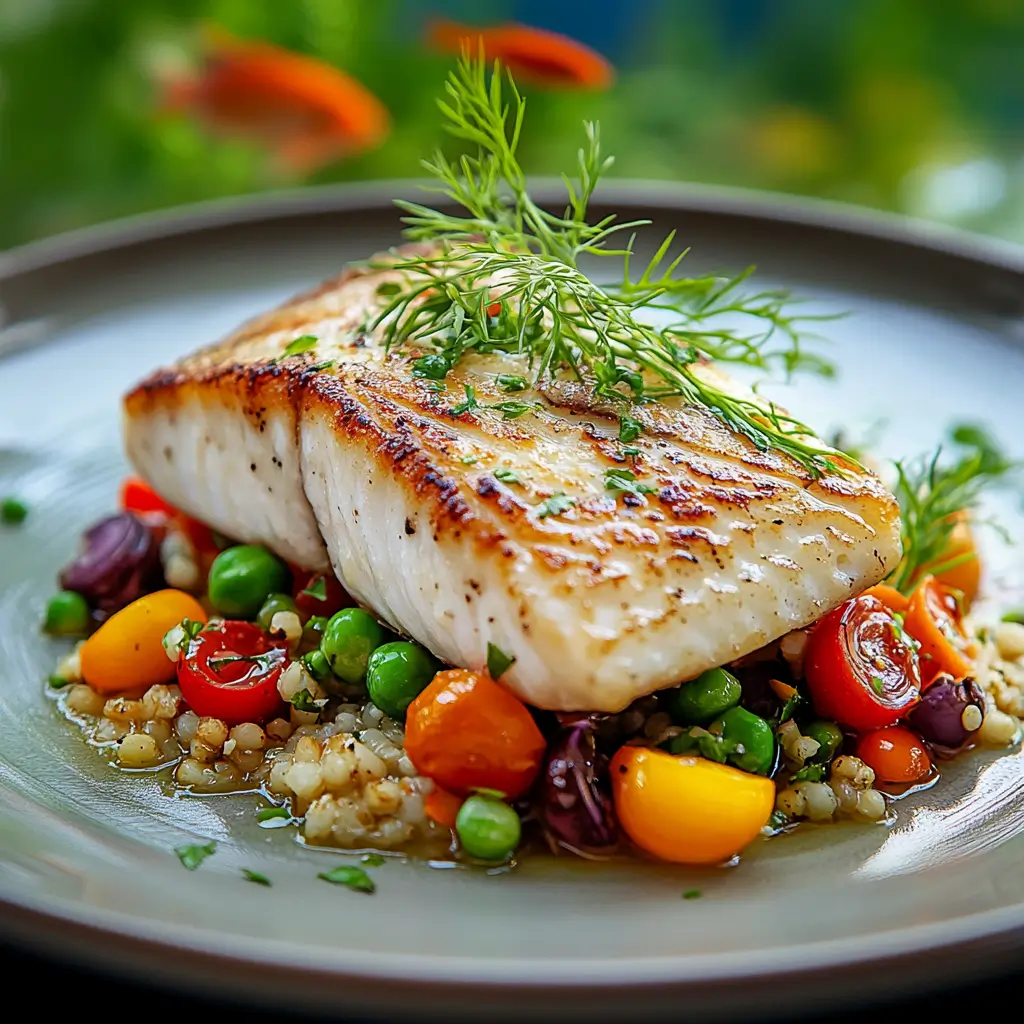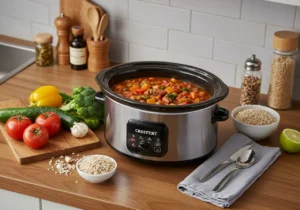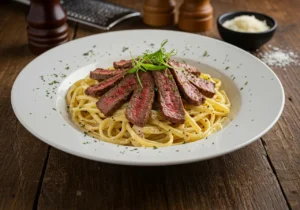If you’re a fish owner, you know how crucial it is to keep your aquatic friends healthy and well-fed. While commercial fish food is an easy option, making your own fish food recipe can be a game-changer for your fish’s health. In this guide, we’ll dive into the benefits of homemade fish food, how to create your own, and why it might just be the best choice for your fish. From different types of fish food recipes for various species to the essential ingredients you’ll need, this article covers it all!
Introduction to Fish Food Recipes
Why Homemade Fish Food is a Great Option
Homemade fish food has grown in popularity for several reasons. First and foremost, it allows you to have full control over the ingredients your fish consume. Unlike commercial options, which may contain preservatives, fillers, and artificial colorants, making your own fish food ensures you know exactly what’s going into your fish’s diet. You can even cater to the specific dietary needs of your fish, whether they are herbivores, omnivores, or carnivores.
Additionally, homemade fish food can be more cost-effective in the long run. With a few simple ingredients, you can prepare large batches and store them for extended use. This not only saves money but also reduces waste as you can create portions based on your fish’s needs.
Benefits of Preparing Your Own Fish Food
Preparing your own fish food recipe comes with numerous benefits. For starters, it allows you to provide your fish with fresh, nutritious meals that can improve their overall health and longevity. Unlike store-bought options, which might be high in fillers and low in essential nutrients, homemade fish food is often packed with the vitamins and minerals that your fish truly need.
Moreover, fish food made from natural ingredients can improve your fish’s color, energy levels, and growth. If you’re keen on providing the best care for your underwater pets, making your own fish food recipe is a fantastic way to ensure they’re eating the healthiest possible meals.
Types of Fish and Their Specific Dietary Needs
Freshwater vs Saltwater Fish: What They Eat
When crafting a fish food recipe, it’s important to understand that the dietary needs of freshwater and saltwater fish can differ significantly. Freshwater fish, for example, tend to be more adaptable and can thrive on a variety of homemade fish food recipes. These species typically enjoy a combination of protein, vegetables, and fats. On the other hand, saltwater fish often require a more specialized diet to meet their higher protein demands. They tend to thrive with more carnivorous meals, including shrimp, squid, or fish meal.
However, whether you have freshwater or saltwater fish, it’s crucial to offer a balanced diet. Freshwater fish might do well with a blend of leafy greens, like spinach and algae, while saltwater fish may need extra protein-rich ingredients. Therefore, when preparing your fish food recipe, ensure you cater to these specific needs to promote optimal growth and health for each type of fish.
Carnivorous, Herbivorous, and Omnivorous Fish
The next step in preparing your fish food recipe is determining whether your fish are carnivores, herbivores, or omnivores. Carnivorous fish, such as piranhas or groupers, will require a protein-packed fish food recipe that includes fish meal, shrimp, or even other smaller fish. On the other hand, herbivorous fish, like certain types of tangs or parrotfish, thrive on plant-based ingredients like seaweed, algae, and leafy greens.
Omnivorous fish, such as goldfish or guppies, benefit from a more balanced fish food recipe that combines both plant and animal-based ingredients. By understanding your fish’s specific dietary needs, you can create a recipe that promotes better health, longevity, and vitality.
Fish Food Recipe Ingredients

Common Ingredients for Fish Food Recipes
When putting together your fish food recipe, the ingredients you choose will directly impact your fish’s health. Some of the most commonly used ingredients include fish meal, spirulina, peas, spinach, and krill. Fish meal is an excellent protein source, while spirulina provides essential nutrients like vitamins A and K. Vegetables like peas and spinach are rich in fiber and offer antioxidants that support immune health.
In addition, garlic is a well-known ingredient often added to homemade fish food recipes due to its anti-parasitic and immune-boosting properties. If you want to enhance your fish food recipe, try adding a bit of fish oil for healthy omega-3 fatty acids. This will help support healthy skin, improve coloration, and boost your fish’s overall well-being.
Nutritional Value of Different Ingredients
Each ingredient in your fish food recipe contributes specific nutrients that are vital to your fish’s health. For instance, fish meal is rich in protein, which is essential for muscle development and energy. Spirulina, on the other hand, is packed with vitamins and minerals that help with growth and immune function. Garlic’s anti-parasitic properties are beneficial for maintaining a parasite-free environment in your aquarium.
Vegetables like peas and spinach are also important for promoting digestive health, and they provide your fish with much-needed fiber. When choosing ingredients for your fish food recipe, it’s crucial to strike the right balance of protein, vitamins, minerals, and fiber to ensure your fish remain healthy, active, and vibrant.
Step-by-Step Guide to Creating Your Fish Food Recipe

Preparing the Ingredients
Before diving into the preparation of your fish food recipe, it’s essential to gather and prepare your ingredients. Start by washing and chopping vegetables like peas or spinach into small, bite-sized pieces. For protein sources like fish meal or shrimp, ensure they are finely ground to make it easier for your fish to consume. You can use a food processor to achieve the right texture.
If you’re using dried ingredients like spirulina or seaweed, make sure they are finely powdered to make them easily digestible for your fish. Once everything is ready, you can begin combining the ingredients.
Mixing and Forming Fish Food
After preparing your ingredients, it’s time to combine them into a cohesive fish food recipe. Begin by mixing the protein sources (like fish meal) with the vegetable ingredients (like peas and spinach). You may also want to add gelatin or agar-agar to help bind the ingredients together and create a solid form.
The goal is to create a mixture that can be molded into pellets, cubes, or sheets, depending on what works best for your aquarium. If you’re making a gel-based recipe, you can pour the mixture into an ice cube tray for easy portioning. Once the mixture is ready, place it in the fridge to set.
Storing Homemade Fish Food
Once your fish food recipe has been prepared and formed, storing it properly is essential for maintaining its freshness. Store the food in an airtight container or a freezer bag to prevent moisture from ruining the texture and nutritional value. Homemade fish food can be stored in the fridge for up to a week, or in the freezer for longer periods, allowing you to keep a steady supply on hand.
To ensure your fish always get the freshest food possible, break the food into small portions and thaw them as needed. This helps reduce waste and ensures you’re providing your fish with high-quality meals.
Fish Food Recipe Variations for Different Fish
Recipe for Carnivorous Fish
If you own carnivorous fish, like piranhas or large predatory fish, your fish food recipe will need to be packed with protein to meet their high-energy requirements. For these types of fish, include ingredients such as shrimp, fish fillets, and squid. You can also add some fish oil to enhance their omega-3 fatty acids, which contribute to better skin and coloration.
A simple carnivorous fish food recipe could include:
- 1 cup of shrimp (chopped finely)
- 1 cup of fish fillets (such as salmon or tilapia)
- 1 tablespoon of fish oil
- 1 tablespoon of gelatin to bind the mixture together
Blend the ingredients together and shape them into small pellets or cubes. Freeze them for future use. This recipe will help ensure your carnivorous fish get the nutrition they need to thrive.
Recipe for Herbivorous Fish
Herbivorous fish, such as tangs or certain types of parrotfish, rely primarily on plant-based foods. For these species, you’ll want a fish food recipe rich in vegetables like spinach, peas, and seaweed. These ingredients provide essential vitamins and minerals, along with fiber to support digestion.
For an herbivorous fish food recipe, you might try:
- 1 cup of spinach (blended)
- 1 cup of peas (blended)
- 1 tablespoon of dried seaweed
- 1 teaspoon of spirulina powder for additional nutrients
Mix the ingredients with some water and add a bit of agar-agar to form a solid block. This plant-based food recipe will keep your herbivorous fish healthy and vibrant.
Recipe for Omnivorous Fish
Omnivorous fish, like goldfish or bettas, require a balanced diet consisting of both plant and animal-based ingredients. A simple fish food recipe for these species might include:
- 1 cup of fish meal (protein source)
- 1 cup of peas (vegetable source)
- 1 tablespoon of spirulina (for vitamins)
Blend these ingredients together and add a small amount of gelatin to bind them. Freeze the mixture in cubes or molds, making it easy to portion out for feeding.
Homemade vs Commercial Fish Food: Which Is Better?
Pros and Cons of Homemade Fish Food
Homemade fish food recipes offer numerous benefits. As mentioned earlier, the main advantage is the control you have over the ingredients. You can eliminate fillers and artificial additives, offering your fish a cleaner, more nutritious diet. Additionally, homemade food allows for customization based on the specific needs of your fish species.
However, preparing fish food at home can be time-consuming and requires a bit of effort. You’ll need to regularly purchase fresh ingredients and dedicate time to blending and storing the food. Nonetheless, the advantages of offering a natural, chemical-free diet often outweigh these challenges.
Benefits of Commercial Fish Food
On the other hand, commercial fish food is convenient and easily accessible. It’s designed to meet the basic dietary needs of fish, and it’s available in various forms, including pellets, flakes, and frozen options. These foods are often fortified with vitamins and minerals that can help support your fish’s health.
However, commercial fish food might contain low-quality ingredients, preservatives, and unnecessary fillers. It’s also less customizable for specific species. Therefore, if you’re looking to provide your fish with the highest quality nutrition, homemade fish food might be the better choice, despite the extra effort involved.
Common Mistakes When Making Fish Food Recipes
Overfeeding and Its Effects
One of the most common mistakes when creating a fish food recipe is overfeeding your fish. Overfeeding can lead to water pollution, which can harm your fish’s environment. It’s essential to provide the right portion sizes based on your fish’s needs. Therefore, always monitor how much your fish eat and adjust the portion sizes accordingly to avoid excess waste and ensure a healthy aquarium.
Choosing the Wrong Ingredients for Your Fish
Another common mistake is selecting the wrong ingredients for your fish food recipe. Not all fish require the same nutritional profile. For instance, carnivorous fish need more protein than herbivorous species, which primarily require plant-based ingredients. Therefore, it’s crucial to research your fish’s specific dietary needs and tailor your fish food recipe accordingly.
By avoiding these mistakes, you can ensure your fish receive the proper nutrition and enjoy a healthy, long life.
Frequently Asked Questions (FAQs) About Fish Food Recipes
How Do I Know What My Fish Needs in Their Diet?
Determining what your fish need in their diet is key to their health and well-being. Different species of fish have unique nutritional requirements. For example, carnivorous fish require a protein-rich diet, while herbivorous fish thrive on plant-based food. Therefore, researching the specific needs of your fish species is essential. Additionally, if you notice signs of malnutrition, such as poor growth or faded colors, it may indicate an imbalance in their diet. Always aim to provide a balanced fish food recipe that includes the right nutrients based on the type of fish you have.
Can I Make Fish Food for All Species?
While it’s possible to create a fish food recipe for various species, it’s important to remember that not all fish have the same dietary needs. Carnivorous fish need more protein, while herbivorous fish rely on plant-based ingredients. Omnivorous fish, on the other hand, require a mix of both. Therefore, it’s crucial to tailor your homemade fish food to suit the species you are feeding. However, many general fish food recipes can cater to multiple species, but slight modifications may be needed to ensure your fish are getting the proper nutrition.
How Long Does Homemade Fish Food Last?
Homemade fish food typically lasts about 2-3 weeks if stored properly. To extend its shelf life, store it in an airtight container in the refrigerator or freezer. Additionally, you should ensure that the food is fully dried or frozen to avoid spoilage. However, always check for signs of mold or unusual odors before feeding it to your fish. If you notice anything unusual, it’s best to discard the food and prepare a fresh batch. Keeping your homemade fish food recipe fresh ensures that your fish receive the best nutrition possible.
Conclusion: Make the Best Fish Food for a Healthier Aquarium
Recap of Key Points
In conclusion, creating a homemade fish food recipe can be a great way to ensure your fish get the nutrition they need to thrive. We’ve discussed how to tailor recipes based on whether your fish are carnivorous, herbivorous, or omnivorous. Additionally, the importance of using the right ingredients and storing your fish food properly was highlighted. By following the tips provided, you can create a healthy and balanced diet for your fish, contributing to their overall well-being.
Final Tips for Creating Your Fish Food Recipe
To wrap things up, always keep in mind the specific needs of your fish when preparing your fish food recipe. Don’t be afraid to experiment with ingredients, but also be sure to do your research first. It’s crucial to use high-quality, fresh ingredients to ensure that your fish get the best possible nutrition. Remember, consistency is key—so make fish food preparation a regular part of your aquarium care routine. Finally, by making your own fish food, you’re not only providing your fish with healthy meals but also ensuring a cleaner, happier environment for your aquatic friends.
For more delicious recipes, check out our Best Dungeness Crab Recipe.




1 thought on “Ultimate Fish Food Recipe: A Complete Guide to Healthy and Happy Fish”